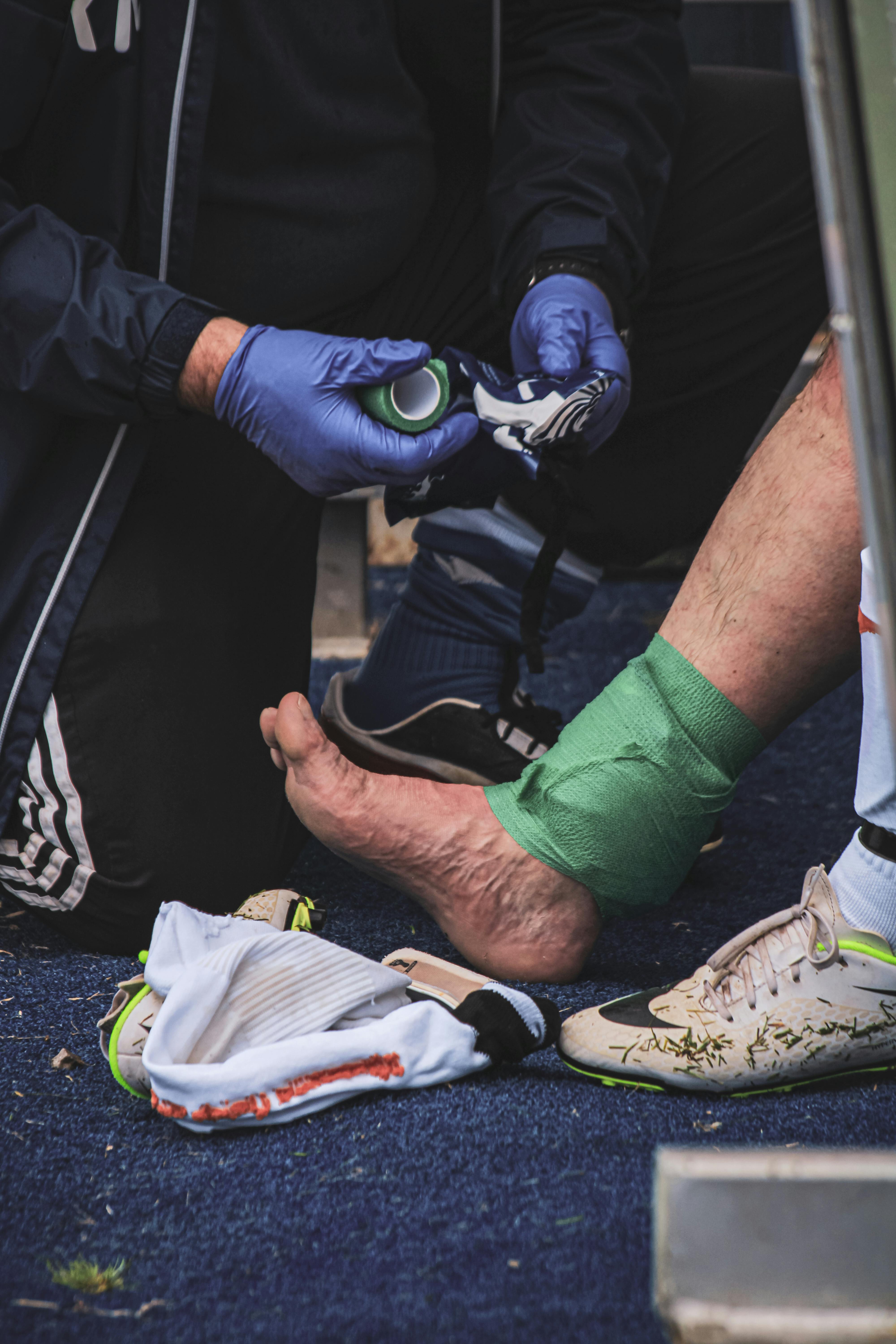Sprained vs. Broken Ankle: What Are the Differences?

This article explores the contrasts between a sprained and a broken ankle, both stemming from ankle twisting.
While they share symptoms like pain and instability, a broken ankle necessitates distinct treatment.
Understanding these differences is crucial for accurate diagnosis and effective treatment, ensuring a smoother recovery journey.
Also read; What to Know About a High Ankle Sprain
Let’s go!
Table of Contents
- What does it mean if you have a sprained ankle?
- Sprain Vs Broken ankle Symptoms
- What’s the difference between sprains and strains?
- What does it mean if you have a broken ankle?
- What does a diagnosis involve?
- How to Know if your ankle is broken or sprained?
- How are these ankle injuries treated?
- What can help with your recovery?
- Bottom line
What does it mean if you have a sprained ankle?
A sprained ankle occurs when the ligaments, which stabilize the ankle joint, are injured due to sudden twisting or overstretching.
This typically happens when the foot is twisted on an uneven surface or during activities like running, jumping, or pivoting. The severity of a sprained ankle varies:
- Grade 1: Ligaments are stretched but not torn, allowing for normal foot movement within a few days, usually healing within 2 weeks.
- Grade 2: Ligament partial tear causes instability, taking 6 to 8 weeks to heal.
- Grade 3: Complete ligament tear requires 3 to 6 months or more for full recovery.
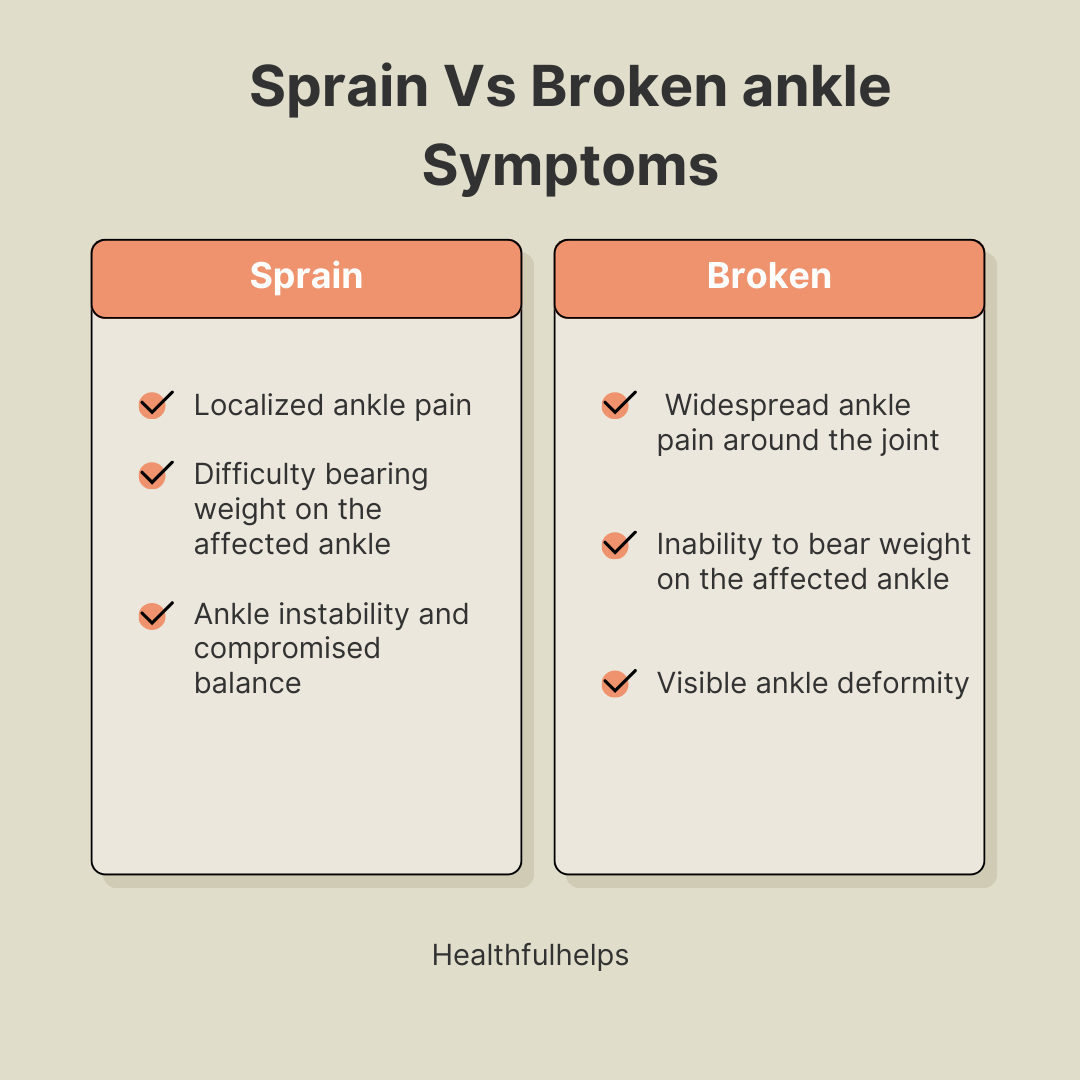
Sprain Vs Broken ankle Symptoms
Symptoms of both a sprained ankle and a broken ankle often include pain and swelling, making it challenging to distinguish between the two.
However, there are key differences in the intensity and presentation of symptoms:
For a Sprained Ankle:
- Localized ankle pain
- Difficulty bearing weight on the affected ankle
- Ankle instability and compromised balance
For a Broken Ankle:
- Widespread ankle pain around the joint
- Inability to bear weight on the affected ankle
- Visible ankle deformity
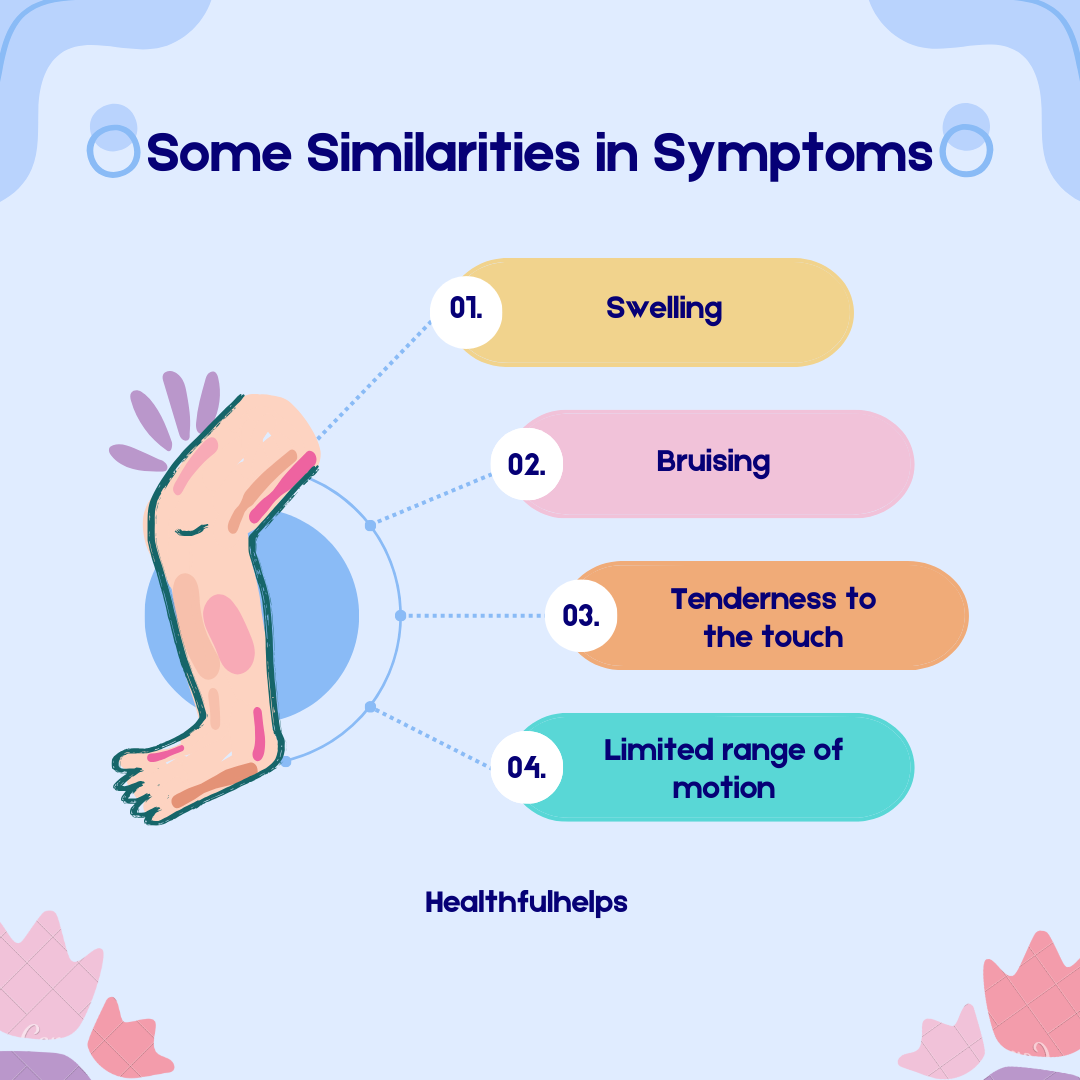
Symptoms that can be common to both injuries:
- Swelling
- Bruising
- Tenderness to the touch
- Limited range of motion
What’s the difference between sprains and strains?
It's common to confuse the terms "sprain" and "strain," but they actually involve distinct parts of the body.
A sprain occurs when a ligament, which connects two bones, is injured.
On the other hand, a strain affects muscles or tendons, which connect muscles to bones. Strains are often referred to as pulled or torn muscles.
Understanding these differences can help in identifying and treating these injuries effectively.
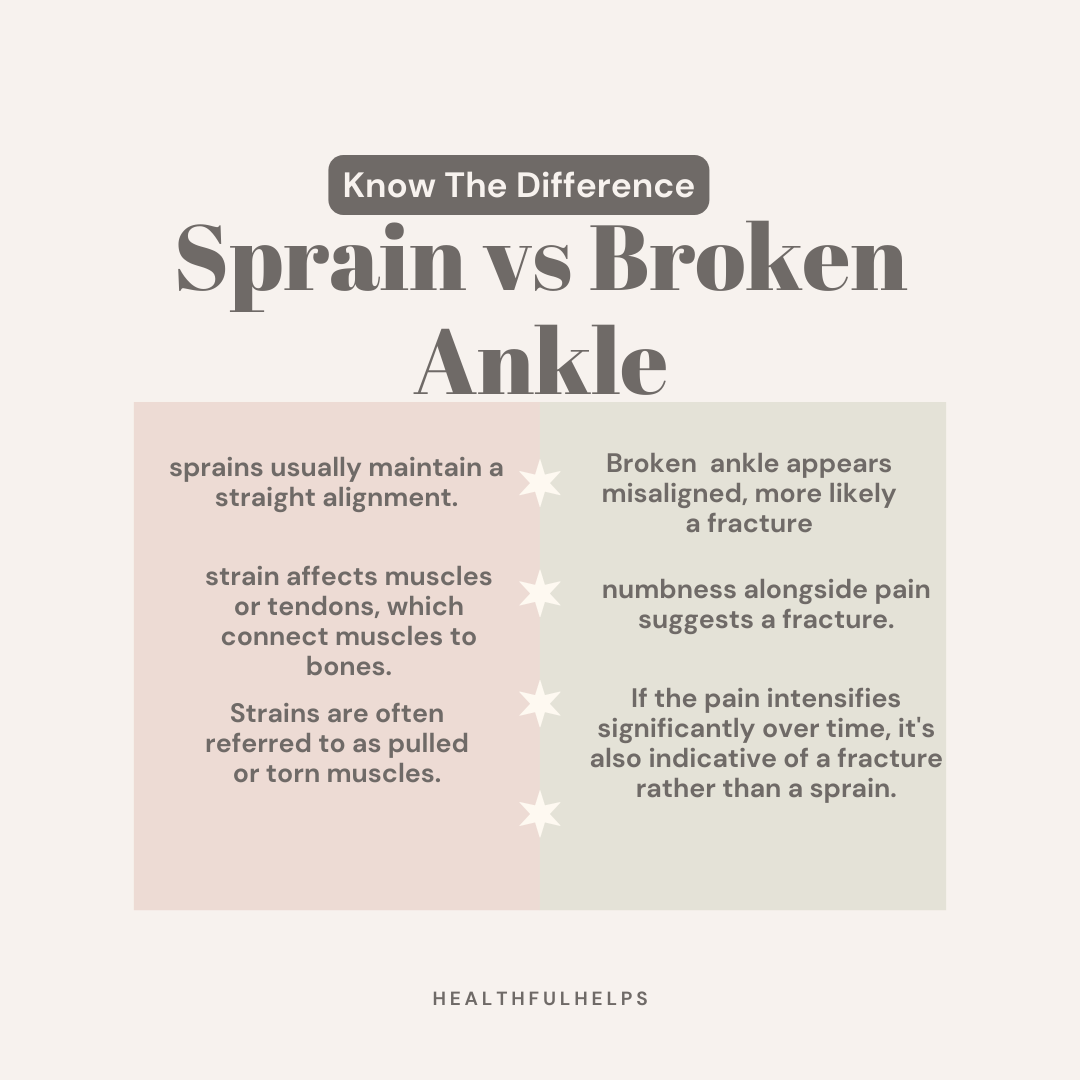
What does it mean if you have a broken ankle?
A broken ankle, medically termed an ankle fracture, occurs when one or more bones surrounding the ankle joint break.
The ankle joint comprises three bones: the tibia (shinbone), fibula (smaller bone in the lower leg), and talus (bone above the heel bone).
These fractures can range from minor hairline fractures to more severe displaced fractures requiring surgery.
They're often caused by twisting injuries or direct impacts, such as those from car accidents or sports-related incidents.
For clean breaks not needing surgery, complete healing typically occurs within 6 to 8 weeks, while surgery may prolong recovery to 12 weeks up to 2 years for full ankle function restoration.
What does a diagnosis involve?
Diagnosing an ankle injury begins with a visit to your healthcare provider shortly after the incident.
They will inquire about the injury's circumstances, observe your ability to walk and bear weight on your foot, and examine your ankle's appearance for signs of bruising and swelling.
Depending on your symptoms, an X-ray may be recommended, following the Ottawa Ankle Rules which outline when X-rays are necessary. These rules suggest an X-ray if you experience pain over specific ankle bones or are unable to bear weight on your foot.
X-rays help identify bone fractures, crucial for diagnosing a broken ankle. If the X-ray shows no fractures but symptoms persist, an ankle sprain is often diagnosed based on symptoms and X-ray results.
However, if pain and swelling persist, an MRI may be conducted to assess soft tissue damage like torn ligaments or tendons.
Also read: How To Wrap A Sprained Ankle
How to Know if your ankle is broken or sprained?
When determining if an ankle injury is a fracture or a sprain, several signs can provide valuable clues. If your ankle appears misaligned, it's more likely a fracture, as sprains usually maintain a straight alignment.
Additionally, experiencing numbness alongside pain suggests a fracture. If the pain intensifies significantly over time, it's also indicative of a fracture rather than a sprain.
These indicators help differentiate between the two types of injuries, aiding in appropriate treatment and recovery.
How are these ankle injuries treated?
When it comes to treating a sprained versus a broken ankle, the approaches are different.
For a sprained ankle, the focus is on reducing pain and swelling, restoring movement, and strengthening the ankle.
Initially, the RICE method (Rest, Ice, Compression, Elevation) is key to ease swelling, along with over-the-counter pain meds. Later, physical therapy might be recommended for tailored exercises.
On the other hand, treating a broken ankle depends on how bad it is.
You might need a protective boot or cast to let the bone heal, or in severe cases, surgery might be necessary.
Physical therapy also plays a role post-healing. Pain relievers can help manage discomfort throughout the process.
What can help with your recovery?
To enhance your recovery from any injury, it's crucial to heed the advice of your healthcare provider.
For a sprained ankle:
- Refrain from putting weight on it until swelling decreases.
- After swelling diminishes, consider using a heating pad for short intervals.
- Engage in gentle ankle stretches, avoiding any movements that cause pain.
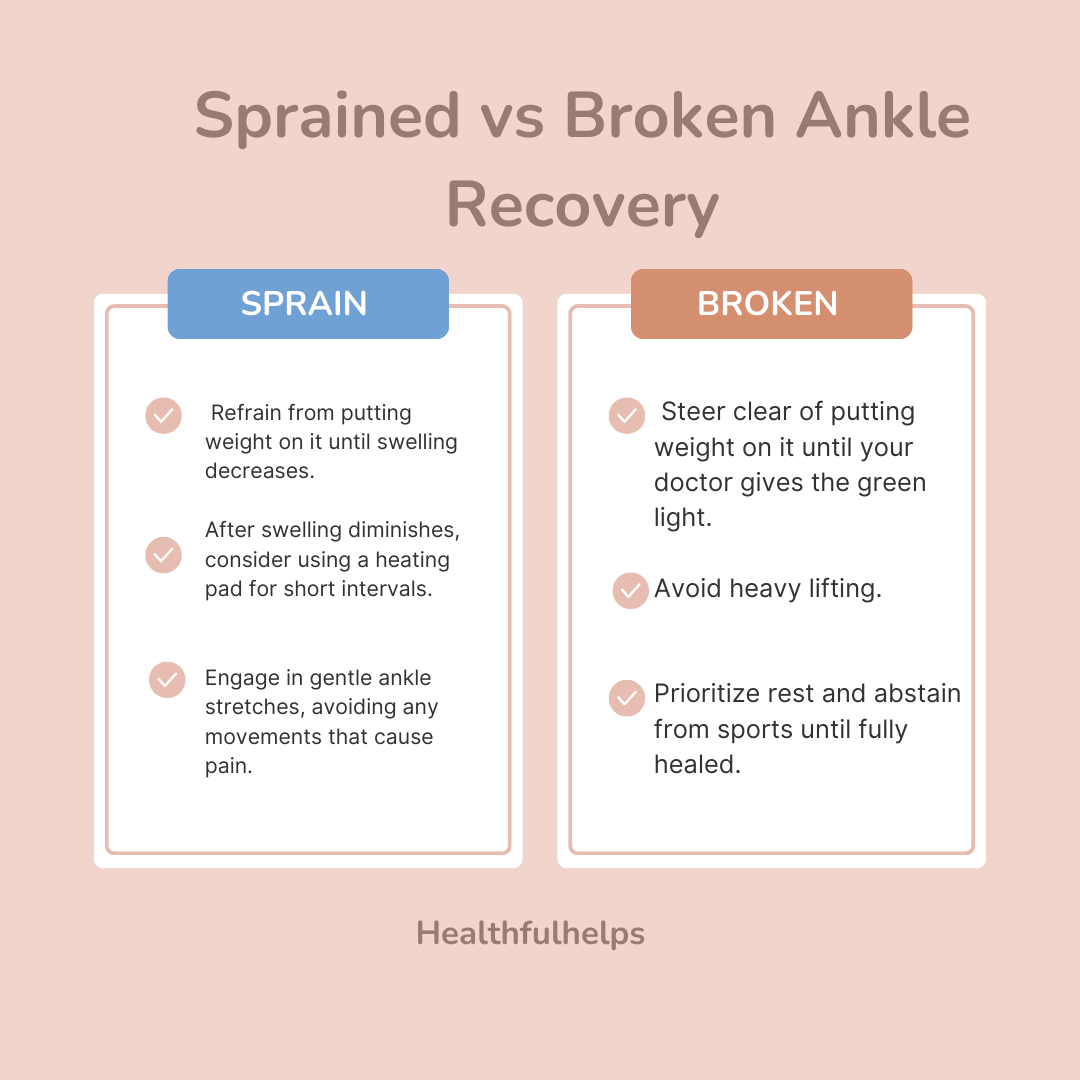
For a broken ankle:
- Steer clear of putting weight on it until your doctor gives the green light.
- Avoid heavy lifting.
- Prioritize rest and abstain from sports until fully healed.
Bottom line
Both sprained and broken ankles stem from twists, rolls, or trauma to the ankle, yet broken ankles typically stem from more forceful and impactful incidents.
Both injuries yield similar symptoms: ankle pain, trouble bearing weight, difficulty walking, swelling, bruising, and limited motion, with broken ankles often presenting more severe symptoms and constraints.
Also read; How to sleep with a sprained ankle

